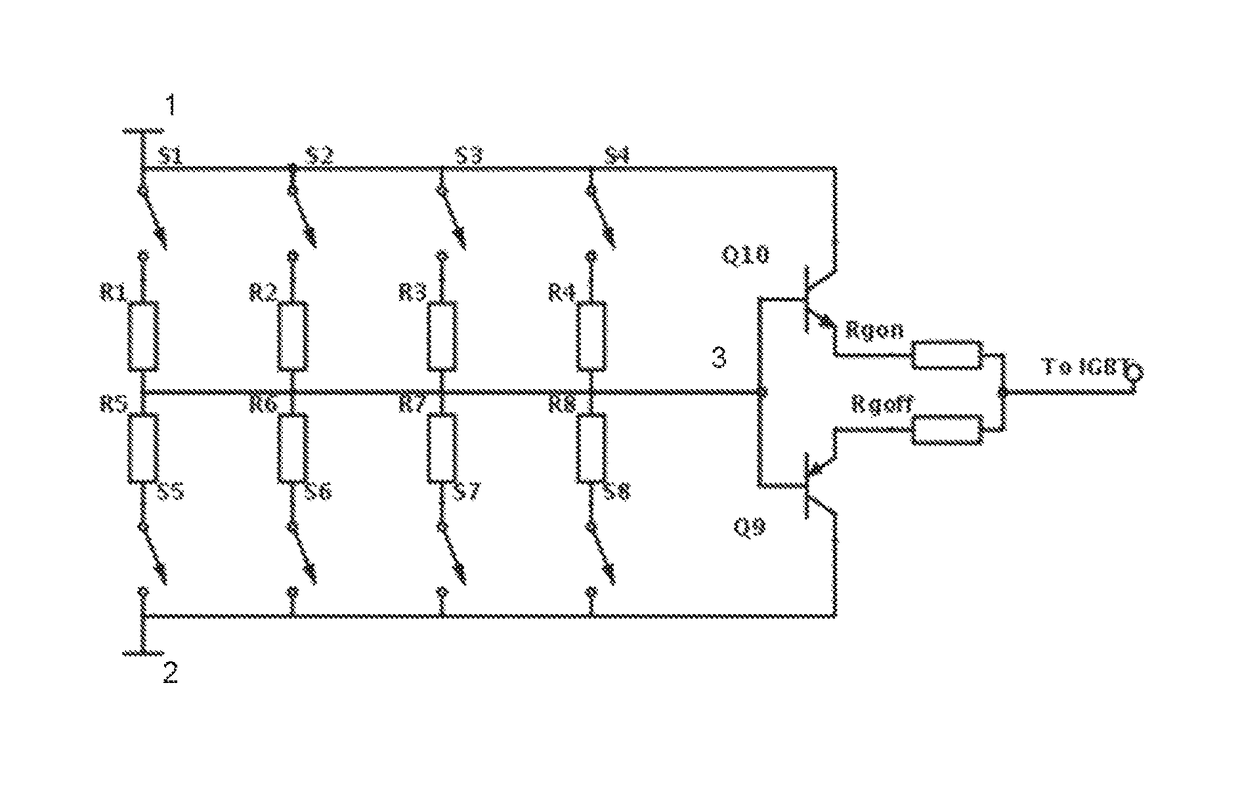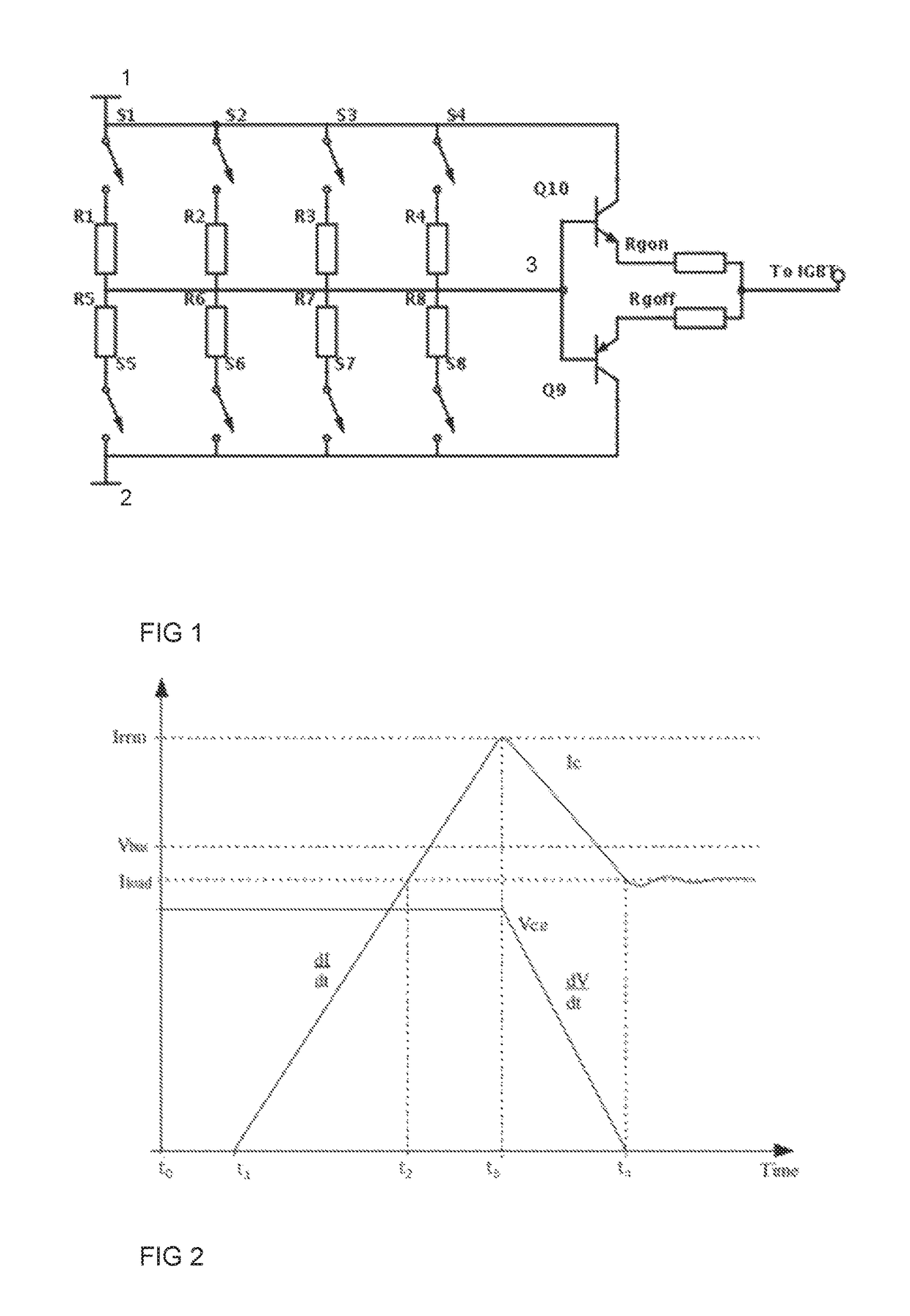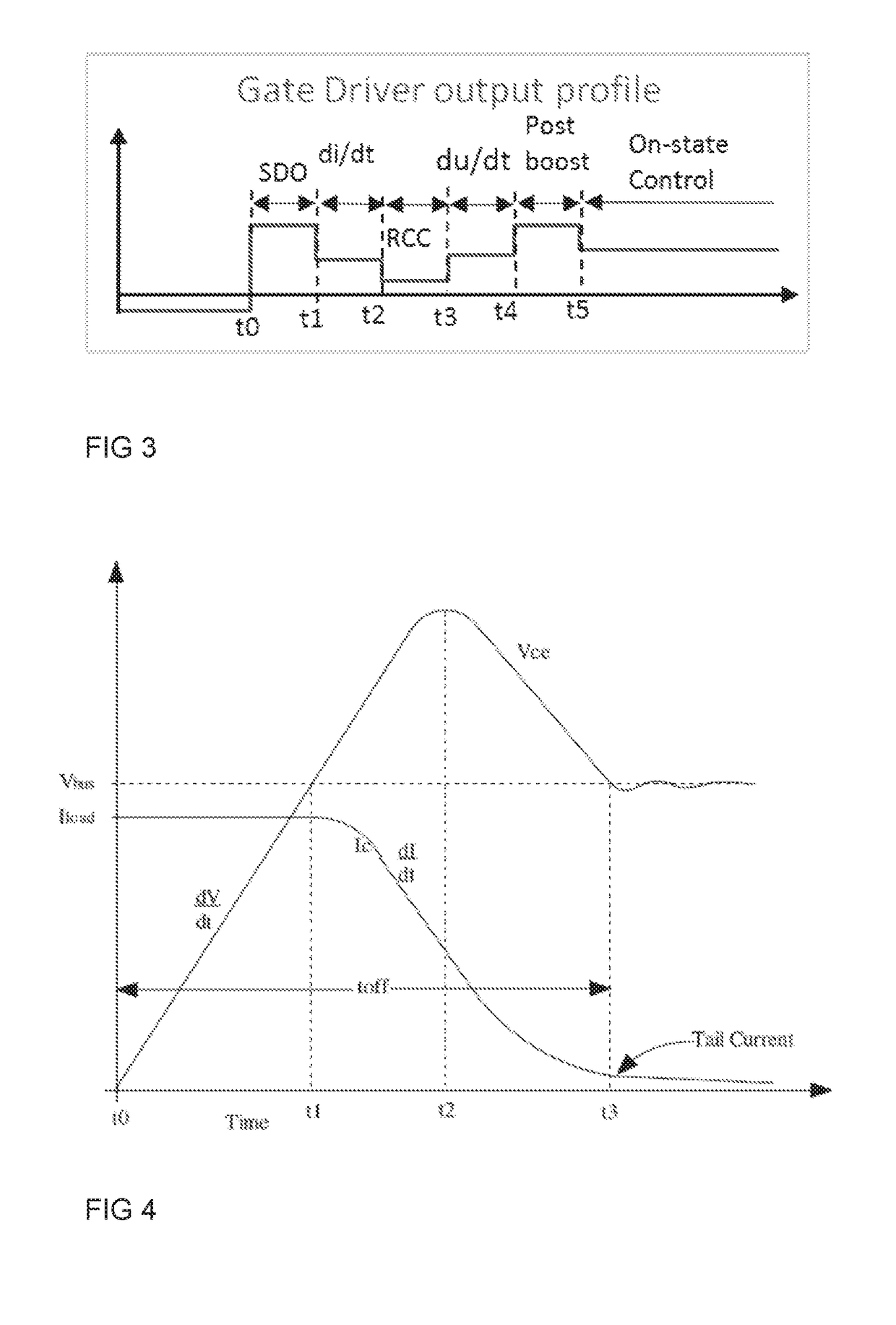Driver circuit
a technology of driving circuit and drive chip, which is applied in the direction of oscillator generator, pulse technique, electronic switching, etc., can solve the problems of affecting the speed of the state change of unable to drive the controlled power semiconductor component, and known gate driver not enabling to control the on-state gate voltage, etc., to achieve limiting temperature variations, limiting radiated interference, and maximising efficiency
- Summary
- Abstract
- Description
- Claims
- Application Information
AI Technical Summary
Benefits of technology
Problems solved by technology
Method used
Image
Examples
Embodiment Construction
[0024]FIG. 1 shows an embodiment of the gate driver circuit of the invention. The gate driver of the embodiment comprises an output stage composed of output switch components Q9, Q10. The output switches are connected in a known manner between a high auxiliary voltage rail and a low auxiliary voltage rail. The auxiliary voltages are supplied to the rails for providing a voltage difference between the rails. The voltage of the low auxiliary rail may be a negative voltage or a positive voltage. In the following the high auxiliary voltage rail and the low auxiliary voltage rail are referred to as positive auxiliary rail and negative auxiliary rail.
[0025]In the embodiment shown in FIG. 1, the output stage comprises output switches, which are transistors forming a push-pull circuit. In such a circuit, the control electrodes 3 i.e. the bases of the transistors are electrically connected to each other to form the control input of the output stage. In the embodiment of FIG. 1, the output of...
PUM
 Login to View More
Login to View More Abstract
Description
Claims
Application Information
 Login to View More
Login to View More - R&D
- Intellectual Property
- Life Sciences
- Materials
- Tech Scout
- Unparalleled Data Quality
- Higher Quality Content
- 60% Fewer Hallucinations
Browse by: Latest US Patents, China's latest patents, Technical Efficacy Thesaurus, Application Domain, Technology Topic, Popular Technical Reports.
© 2025 PatSnap. All rights reserved.Legal|Privacy policy|Modern Slavery Act Transparency Statement|Sitemap|About US| Contact US: help@patsnap.com



